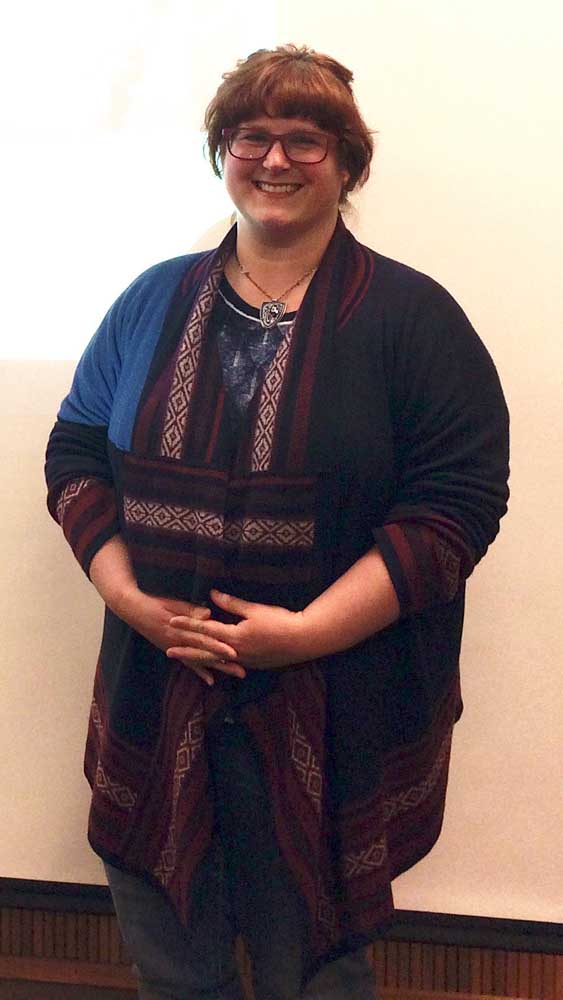How we get fish sticks
Published 10:59 am Tuesday, March 14, 2017

- Jennifer Burns Bright at the Seaside Library.
Author studies why Oregonians don’t eat local seafood
Trending
By Rebecca Herren
EO Media Group
There is more to fishing than simply choosing the right bait and reeling in the fish. The purest attribute of a true fisherman is the ability to stretch the truth, from increasing the size and weight of the fish to delivering a lengthy monologue at the local brewery about the giant fish that got away; envisioning the protagonist of the 1954 science fiction film “20,000 Leagues Under the Sea.”
Trending
Telling a tall fishing tale certainly follows a time-honored tradition, but this fish tale is of a different sort. It’s the one in pursuit of answering the question, “Why Oregonians don’t eat enough locally caught seafood?”
This question and others prompted a conversation with Jennifer Burns Bright during a Feb. 16 Oregon Humanities Conversation Project program at the Seaside Public Library.
Bright is an agriculture and travel writer. After moving to Port Orford, she wanted to do something different. She wanted to write about seafood. “It’s been an aspect of our food system that I didn’t know much about and so little is known about our local seafood.”
The presentation “Fish Tales: Traditions and Challenges of Seafood in Oregon” brought to light the relationship consumers have with the variety of products provided by the sea that some people may be unaware, cultural traditions related to fishing and understanding the ocean’s bounty and challenges.
One attendee shared her experience on the difficulty of buying fish directly from the docks. Bright explained how regulations have changed from years past; meaning in present day, the daily catch mostly goes to one buyer or company. “To sell directly, fishermen need to have a resell license or they can buy their fish back from the folks who are buying the fish off the boats and sell that to local consumers.” Most fishermen, she said, “don’t want to bother because of too much red tape.”
A slide presentation balanced the conversations with graphs and figures. According to one, Oregonians eat about 15 pounds of seafood a year compared to 53 pounds of beef, 58 pounds of chicken and 175 pounds of grain. A 2014 study indicated that in America, people eat 15 pounds of seafood per person: 4 pounds of shrimp, 2.5 pounds salmon, 2.5 pounds of mostly canned tuna, over 1.5 pounds of tilapia, followed by pollock, basa, cod, catfish, crab and clams.
“Seafood consumption in the United States totals 90 percent imported,” said Bright. “Ten percent is domestic or both because there is no way to classify fish that’s caught locally to the fish that’s shipped out to Canada or China then bought back as ready-made cod fillets or fish sticks,” adding that the percentage could be higher and is impossible to track.
Top countries the U.S. imports to are: China, Thailand, Canada, Indonesia, Viet Nam and Ecuador. Shrimp being the greatest percentage at 33 percent followed by 22 percent for canned tuna and salmon; 45 percent fresh water fish, ground water fish, crab and squid make up the rest. Additionally, one half of the 90 percent of consumed imports are farmed — mostly from overseas.
Bright explained the process of farming fish and how they’re grown, noting this type of farming is not always healthy as one slide of an overseas tilapia farm revealed a large algae bloom. “Often this results in polluted conditions and disease because the fish are grown very close together and the algae bloom depletes the oxygen in the water.”
Currently, as Bright pointed out, there’s some concern over imported farm salmon due to an epidemic of sea lice that has wiped out much of the salmon from the Nordic countries like Scandinavia and parts of Russia, creating a shortage. “Because of this, salmon will become more expensive and less available when purchased at grocery stores,” adding that this affects farmed salmon and eventually could affect all salmon.
As a whole, the farm seafood industry was $1.4 billion in 2013, one-seventh of the total domestic seafood market.
Equally, the U.S. exports about 90 percent of its seafood to the global market. One third is exported for human consumption and two-thirds for other uses: animal food, fertilizer, thickeners and calcium sources for supplements.
“Our trade is dominated by a few large companies,” said Bright.
Pacific Seafood and Pacific Choice being the biggest making $1 billion in 2015. They have 18 seafood processing plants in this area and are the sole buyers of seafood in seven west coast cities. “When the boats come in they can only sell to one buyer. There’s one company that owns all the equipment, the trucks, the shipping containers, the dock, the lift; so you don’t have a choice.”
This, according to Bright, has created anti-trust lawsuits including the recent crab strike.
In 2015, Oregon’s seafood exports totaled $53.6 million with top markets being Canada, Japan, Ukraine, Malaysia and China. Oregon’s most valuable seafood is its “little pink shrimp, which is mainly grown here,” she said, followed by Dungeness crab, albacore, sable fish and rockfish.
More conversations touched on subjects of where people buy seafood, marketing strategies that appeal to consumers, healthy eating, ideologies and values.
But the evening didn’t pass without hearing a few seafaring tales. Stories of catching a 10-foot thrasher shark or the one about catching nine barracuda off the coast of Mexico; a sturgeon so big it could feed a family for a year; an old fisherman who taught children how to net, boil, peel and eat shrimp; and how to keep live carp fresh in preparation for Christmas dinner. And, lastly, the one about a young, inquisitive girl who detested carp so much she needed to find out what type of fish were really in fish sticks.









